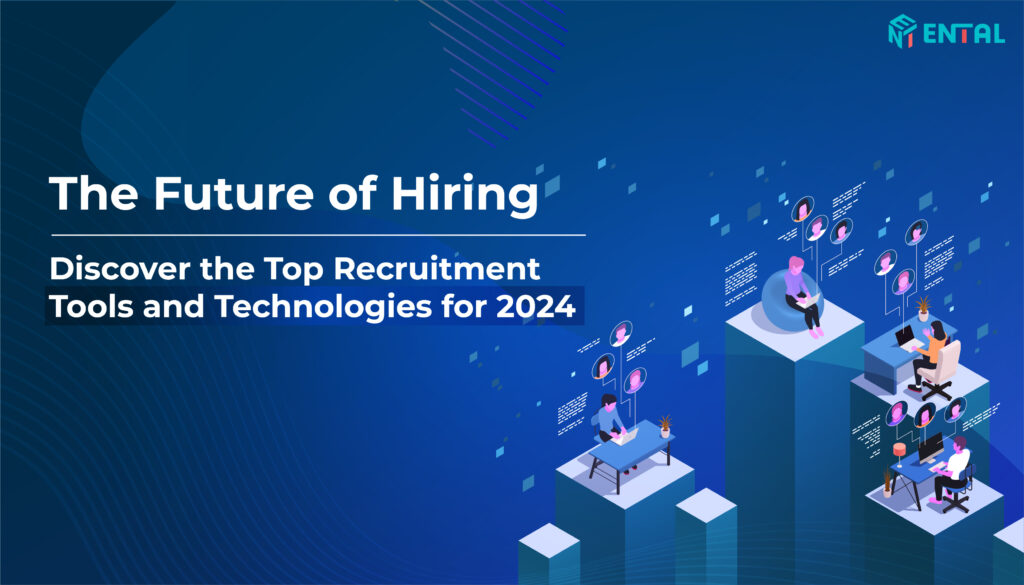BLOG
OUR LATEST NEWS
- Home
How to Optimize Your Hiring Process with Data Analytics

Introduction to data analytics in the hiring process:
In today’s rapidly evolving business landscape,
organizations are constantly seeking ways to gain a competitive edge. One area
that has garnered significant attention is the hiring process. By leveraging
the power of data analytics, companies can streamline their recruitment
efforts, identify top talent, and make informed decisions that drive success. This
comprehensive guide will explore how you can harness the potential of data
analytics to optimize your hiring process, ensuring you attract and retain the
best candidates for your organization.
The benfits of using data analytics in hiring:
Embracing data analytics in your hiring process can yield numerous advantages, including:
Increased Efficiency: By analyzing data from various sources, you can identify bottlenecks, streamline workflows, and reduce the time-to-hire, resulting in a more efficient and cost-effective recruitment process.
Better Candidate Matching: Data-driven insights can help you identify the most suitable candidates for specific roles, ensuring a better fit between the job requirements and the applicant’s qualifications, skills, and cultural alignment.
Improved Retention Rates: By analyzing data related to employee performance, engagement, and turnover, you can make informed decisions that lead to higher retention rates and a more satisfied workforce.
Reduced Bias: Data analytics can help mitigate unconscious biases that may creep into the hiring process, promoting a more objective and fair evaluation of candidates.
Competitive Advantage: By leveraging data analytics, you can gain valuable insights into industry trends, talent pools, and competitor strategies, giving you a competitive edge in attracting and retaining top talent.
Key metrics to track in the hiring process:
To effectively utilize data analytics in your hiring process, it’s crucial to identify and track relevant metrics. Here are some key metrics to consider:
Time-to-Hire: This metric measures the duration from initiating the recruitment process to extending an offer to a candidate. Tracking this metric can help you identify bottlenecks and areas for improvement.
Cost-per-Hire: This metric calculates the total cost associated with hiring a new employee, including advertising, recruitment agency fees, and onboarding expenses. Monitoring this metric can help you optimize your recruitment budget and identify cost-effective sourcing channels.
Source of Hire: Tracking the sources from which you attract candidates (e.g., job boards, employee referrals, social media) can help you allocate your recruitment resources more effectively.
Offer Acceptance Rate: This metric measures the percentage of candidates who accept job offers. Analyzing this data can provide insights into the competitiveness of your compensation packages and employer brand perception.
Retention Rate: Monitoring employee retention rates can help you identify potential issues with your hiring process, onboarding practices, or company culture, allowing you to take proactive measures to improve employee satisfaction and reduce turnover.
Collecting and analyzing hiring data:
To leverage data analytics effectively, you need to collect and analyze relevant data from various sources. Here are some strategies for collecting and analyzing hiring data:
Applicant Tracking System (ATS): An ATS can capture and store data related to job postings, candidate applications, and hiring decisions, providing a wealth of information for analysis.
Employee Surveys: Conducting regular employee surveys can provide valuable insights into employee satisfaction, engagement, and potential areas for improvement in the hiring process.
Exit Interviews: Gathering data from exit interviews can shed light on reasons for employee turnover and help identify potential issues with your hiring or retention strategies.
Social Media and Online Presence: Monitoring your organization’s online presence and social media activity can provide insights into your employer brand perception and candidate engagement.
Data Integration: Integrating data from various sources, such as HR information systems, performance management tools, and customer relationship management (CRM) systems, can provide a comprehensive view of your hiring process and workforce dynamics.
Using data analytics to improve job descriptions:
Job descriptions play a crucial role in attracting the right candidates. By leveraging data analytics, you can optimize your job descriptions to better resonate with your target audience and improve the quality of applicants. Here are some strategies to consider:
Keyword Analysis: Analyze job postings and resumes of successful hires to identify the most relevant keywords and phrases for specific roles. Incorporate these keywords into your job descriptions to improve visibility and attract qualified candidates.
Sentiment Analysis: Utilize natural language processing (NLP) techniques to analyze the sentiment and tone of your job descriptions. Positive and engaging language can enhance the appeal of your job postings and improve candidate engagement.
Competitor Analysis: Analyze job descriptions from competitors and industry leaders to identify best practices, trends, and areas where you can differentiate your employer brand and value proposition.
A/B Testing: Conduct A/B testing on different versions of your job descriptions to measure their effectiveness in attracting qualified candidates. Analyze metrics such as application rates, time spent on the job posting, and quality of applicants to identify the most effective descriptions.
Leveraging data to optimize candidate sourcing:
Effective candidate sourcing is essential for attracting top talent. By leveraging data analytics, you can optimize your sourcing strategies and target the most promising candidate pools. Here are some strategies to consider:
Talent Pool Analysis: Analyze data from your ATS and other sources to identify the most productive talent pools for specific roles. This can include geographic regions, educational institutions, professional networks, or industry sectors.
Social Media Analytics: Utilize social media analytics tools to identify potential candidates based on their online presence, skills, and interests. This can help you target passive candidates who may not be actively searching for new opportunities.
Predictive Analytics: Implement predictive analytics models to identify candidates who are most likely to be interested in your job opportunities and have a higher probability of accepting an offer. This can help you prioritize your sourcing efforts and improve the efficiency of your recruitment process.
Employer Branding Analytics: Analyze data related to your employer brand perception, such as online reviews, social media mentions, and employee referral rates. Use these insights to refine your employer branding strategies and improve candidate attraction.
Diversity and Inclusion Analytics: Leverage data analytics to identify potential biases in your sourcing strategies and ensure diversity and inclusion in your candidate pools. This can help you attract a diverse range of talent and foster a more inclusive workplace culture.
Analyzing candidate performance through data:
Data analytics can provide valuable insights into candidate performance, helping you make informed decisions throughout the hiring process. Here are some strategies to consider:
Pre-Employment Assessment Analysis: Analyze data from pre-employment assessments, such as cognitive ability tests, personality assessments, and job simulations, to identify top-performing candidates and predict future job performance.
Interview Performance Analysis: Collect and analyze data from structured interviews, such as rating scales, competency evaluations, and feedback from interviewers. This can help you identify patterns and potential biases in the interview process, and make more objective hiring decisions.
Background Check Analysis: Analyze data from background checks, reference checks, and employment verification processes to identify potential red flags or areas of concern for candidates.
Onboarding and Training Analytics: Track and analyze data related to new hire onboarding, training, and performance to identify areas for improvement in your hiring and onboarding processes.
Post-Hire Performance Analysis: Analyze data on employee performance, productivity, and engagement after they have been hired. This can help you identify potential gaps in your hiring process and make adjustments to ensure better candidate-job fit.
Reducing bias in the hiring process with data analytics:
Unconscious biases can creep into the hiring process, leading to potential discrimination and missed opportunities to hire top talent. Data analytics can help mitigate these biases by providing objective insights and promoting fairness. Here are some strategies to consider:
Blind Resume Screening: Implement blind resume screening processes where identifying information, such as names and demographic details, is removed from resumes before evaluation. This can help reduce potential biases based on factors like gender, ethnicity, or age.
Structured Interviews: Develop structured interview processes with standardized questions and rating scales. This can help ensure consistency and objectivity in the evaluation of candidates, reducing the impact of personal biases.
Diversity Analytics: Analyze data related to diversity in your candidate pools, hiring decisions, and employee demographics. Use these insights to identify potential biases and implement strategies to promote diversity and inclusion.
Algorithmic Fairness: Implement algorithmic fairness techniques in your data analytics models and decision-support systems. This can help ensure that the algorithms used in your hiring process are free from biases and promote equal opportunities.
Continuous Monitoring and Auditing: Regularly monitor and audit your hiring processes and data analytics systems to identify potential biases and take corrective actions as needed. This can help maintain fairness and compliance with relevant laws and regulations.
Implementing data-driven decision making in hiring:
To fully leverage the power of data analytics in your hiring process, it’s essential to foster a culture of data-driven decision making within your organization. Here are some strategies to consider:
Executive Buy-In: Secure buy-in and support from executive leadership for implementing data-driven hiring practices. This can help ensure the necessary resources and commitment for successful implementation.
Cross-functional collaboration: Encourage collaboration between HR, recruitment, data analytics, and other relevant teams to share insights, identify opportunities, and make informed decisions based on data.
Data Literacy Training: Provide training and resources to help hiring managers, recruiters, and other stakeholders develop data literacy skills. This can ensure they can effectively interpret and utilize data analytics insights in their decision-making processes.
Data Governance and Security: Implement robust data governance and security measures to ensure the integrity, privacy, and ethical use of the data collected and analyzed for hiring purposes.
Continuous Improvement: Regularly review and refine your data analytics processes, metrics, and decision-making frameworks based on feedback and evolving business needs. This can help ensure your hiring practices remain agile and effective.
Conclusion: Unlocking the power of data analytics in the hiring process:
In today’s competitive business landscape, leveraging data analytics in your hiring process can provide a significant competitive advantage. By embracing data-driven strategies, you can streamline your recruitment efforts, identify top talent, reduce biases, and make informed decisions that drive organizational success.
Remember, implementing data analytics in your hiring process is not a one-time effort but an ongoing journey. Continuously monitor and refine your processes, stay updated with the latest technologies and best practices, and foster a culture of data-driven decision making within your organization.
Engage with Ental to Transform your Recruitment Success:
By unlocking the power of data analytics, you can optimize your hiring process, attract and retain top talent, and position your organization for long-term success in a rapidly evolving business landscape.


